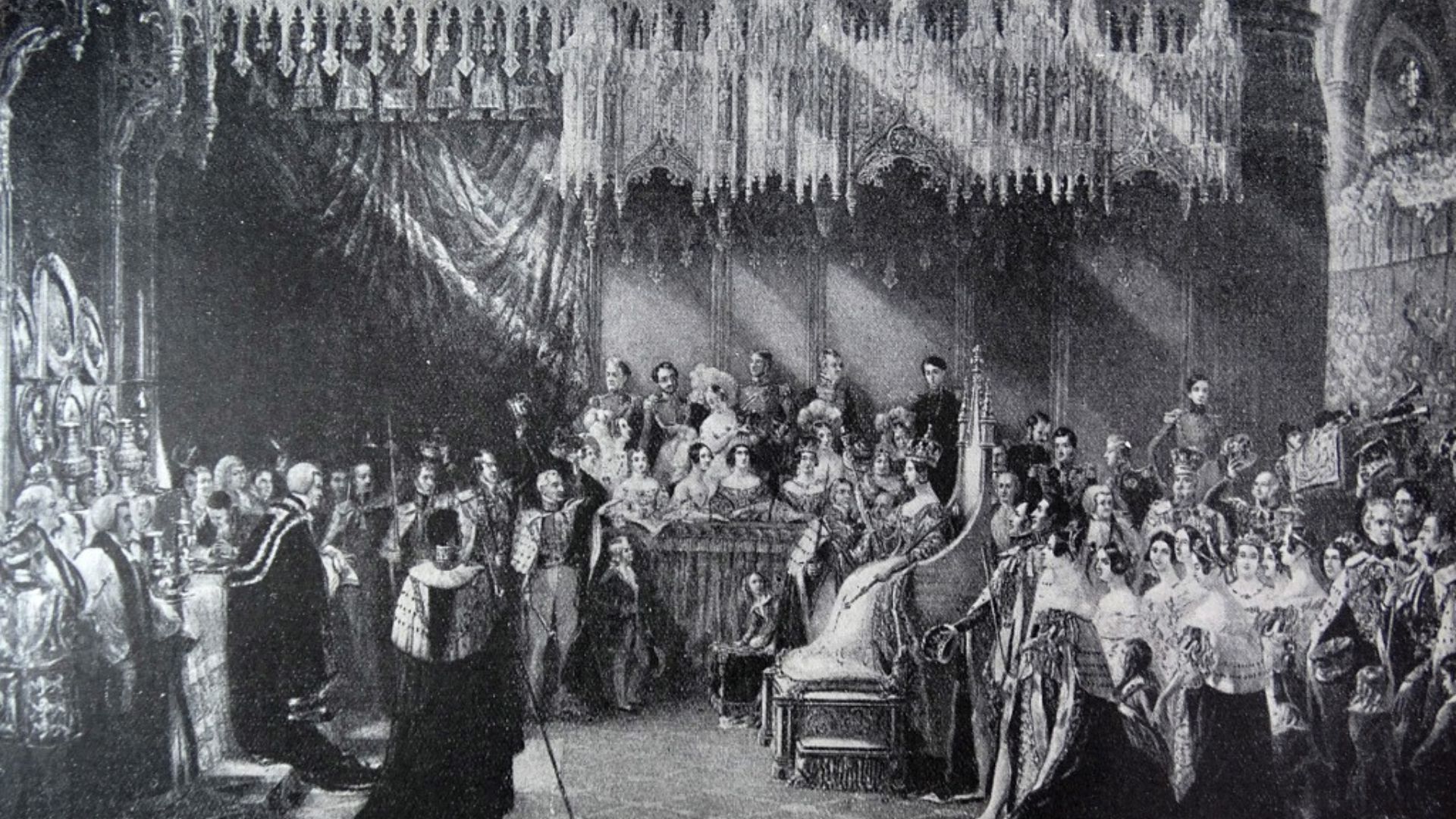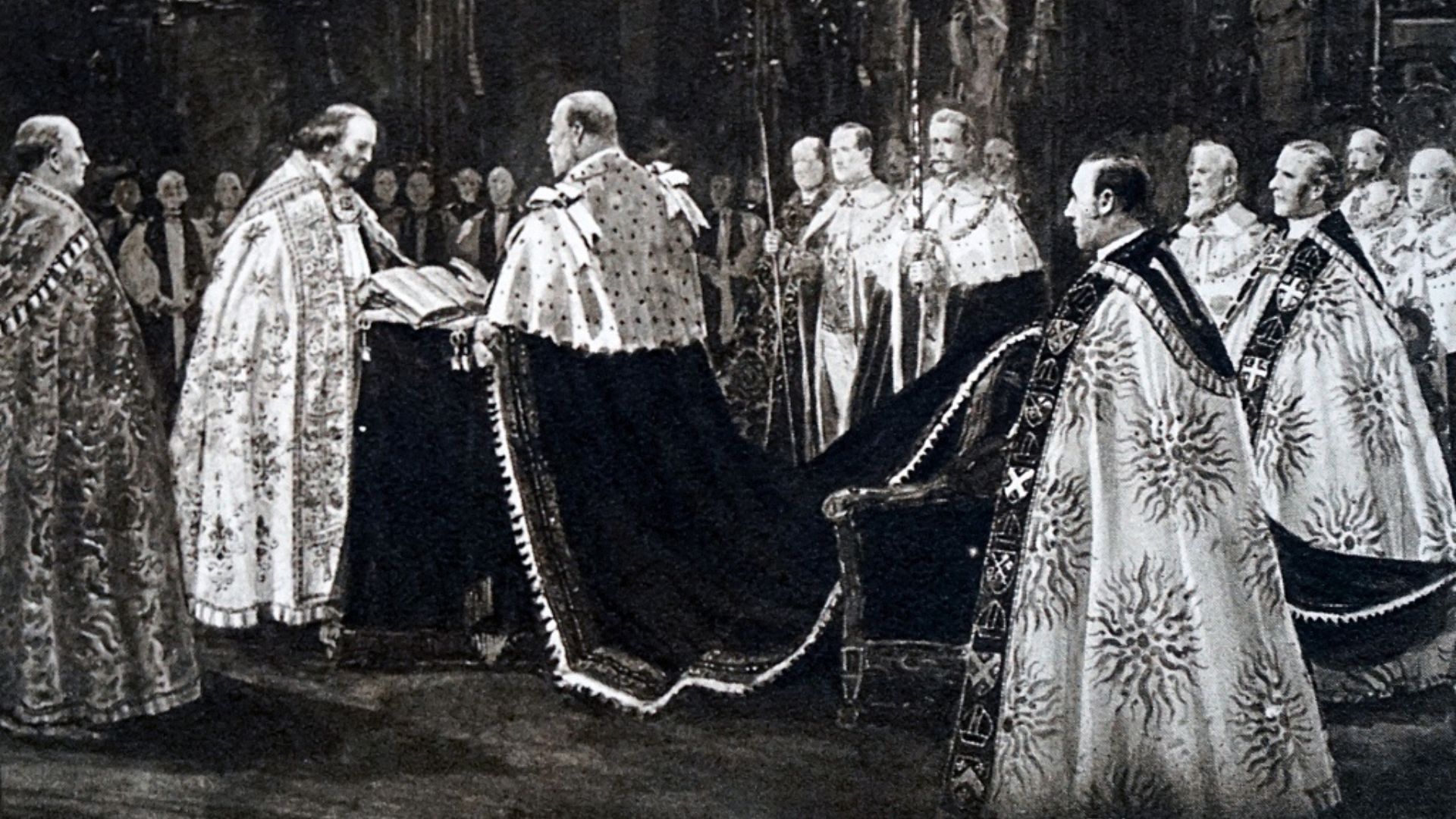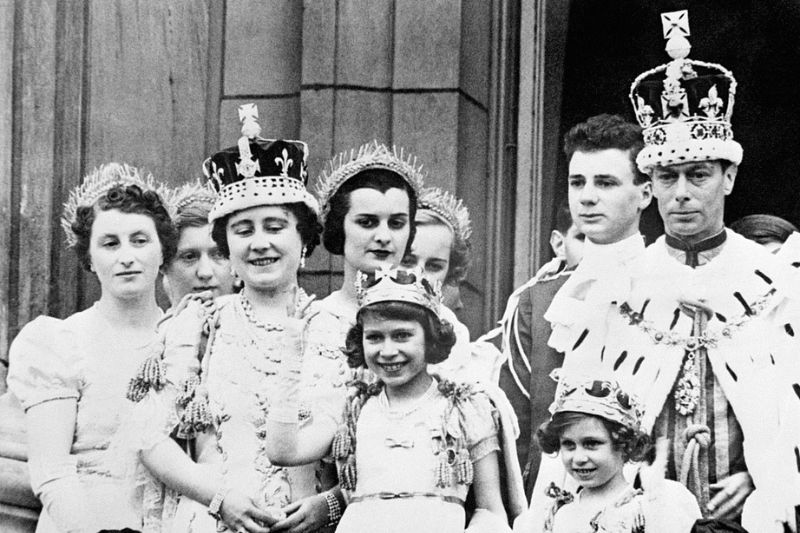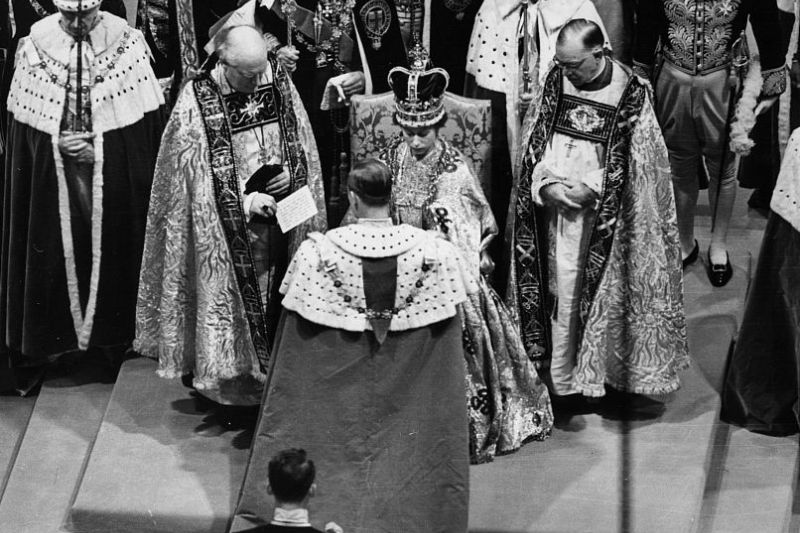
They may seem ageless, but British coronations – here, Queen Elizabeth II's in 1953 – change every time. /Hulton Archive/Getty Images
They may seem ageless, but British coronations – here, Queen Elizabeth II's in 1953 – change every time. /Hulton Archive/Getty Images
Nobody does a coronation quite like the British – literally. The House of Windsor is the last European monarchy to pile on the pomp and circumstance in such a theatrical fashion.
At the dawn of the 20th century, France was the only future European Union member nation without a monarchy, but many others have since embraced republicanism. Even those nations retaining a crowned head of state have either dialed down the drama – notably Scandinavian countries like Denmark, Norway and Sweden, which nowadays prefer a much simpler ceremony – or never really embraced a public coronation anyway, as is true in the Benelux countries.
READ MORE
Concorde: A collaborative European dream that died
Hunger stones: Time-capsule cries to the cloudless skies
Memos, rows and Windows: A '90s struggle to get the UK online
As with many British traditions, what might seem – not entirely accidentally – to be ancient rituals are largely later confections or cunningly revived relics of bygone eras, presented as uninterrupted connections to the past. In truth, coronations have changed over the centuries, with a notable reboot concocted in the 19th century after a particularly bad experience.
Queen Victoria's 1838 coronation was best described as underwhelming. Costed by Parliament at £70,000 – far less than the £240,000 bill for the coronation of her uncle, George IV, the previous decade, the almost completely unrehearsed event frequently threatened to lurch into farce.
The music was widely criticized: A planned new coronation anthem by Thomas Attwood wasn't finished, partly because he'd died three months previously and nobody had replaced him, while the musical direction of Sir George Smart was hampered by him insisting on trying to play the organ at the same time as conducting the orchestra of 80 and choir of 157.

Queen Victoria's coronation was not a success. /Universal History Archive/UIG via Getty Images/CFP
Queen Victoria's coronation was not a success. /Universal History Archive/UIG via Getty Images/CFP
The clergy carrying out the ceremony frequently got lost in the words. The royal jewelers made Victoria's ring a perfect fit – for the wrong finger. Lord Rolle, a sizable 82-year-old in ill health, fell down the steps while attempting to pay homage to Victoria; when he tried again, the 19-year-old queen rose to meet him instead. And the decision of the Treasurer of the Household to mark the end of the ceremony – after a grueling five hours and two costume changes for the new queen – by throwing silver coronation medals into the crowd sparked an unseemly scramble.
As future Prime Minister Benjamin Disraeli noted, participants "were always in doubt as to what came next, and you saw the want of rehearsal." Historian Roy Strong went in harder, calling it "the last of the botched coronations."
After three crownings in 17 years, the UK would wait six decades for another as Victoria set a longevity record to be matched only by Queen Elizabeth II. In the meantime, historians explored ancient texts, revived medieval coronation rites and constructed a new regal framework fit for the occasion.
In 1860, the Marquess of Salisbury had written that "Some nations have a gift for the ceremonial; in England the case is exactly the reverse." The reinvention of the coronation was an attempt to inspire loyalty throughout a global empire via the medium of historical theatricality; as journalist Walter Bagehot put it, "The more democratic we get, the more we shall get to like state and show."
Into the 20th century – and back to the future
Victoria's 1897 Diamond Jubilee was a useful practice run for Edward VII's coronation in 1902 – carefully planned to reflect Britain's global influence while incorporating religion to reinforce the ideal of monarchy being close to divinity.
Even so, Edward's coronation had its problems. Nearing 60 and fond of a large cigar and a hearty meal, the King was in ill health which necessitated the coronation's postponement on two days' notice. This led to legal battles with disgruntled business owners, while many of the assembled heads of state returned home without returning for the rearranged date six weeks later.
The service itself was again somewhat marred by an infirm octogenarian: The Archbishop of Canterbury, who would die before the year was out, refused to delegate duties. Two other bishops had to hold him up; the service text had to be printed in huge type; he placed the crown back to front on Edward's head, and after kneeling to pay homage, had to be helped up by the new king.

By the time of his coronation in 1902, Edward VII was nearly 60 and in ill health. /Universal History Archive/UIG via Getty Images/CFP
By the time of his coronation in 1902, Edward VII was nearly 60 and in ill health. /Universal History Archive/UIG via Getty Images/CFP
Because of his failing health, Edward eschewed the traditional St Edward's Crown – created for King Charles II on the restoration of the monarchy in 1661, to replace one melted or sold during England's brief republican interregnum – opting instead for the lighter Imperial State Crown.
At least the music was good, incorporating 400 years of English compositions. And that coronation set the modern/historical template, with a state procession from Buckingham Palace to Westminster Abbey followed by the Recognition, the Anointing (the monarch being daubed with holy oil to symbolize his or her spiritual elevation), the Coronation Oath, the Homage (the dutiful kneeling which so often causes problems) and finally another procession from the Abbey back to the Palace.
Of these, the only legal requirement according to the House of Commons Library is the Oath, "in which the monarch swears to govern the peoples of the United Kingdom and the Commonwealth Realms 'according to their respective laws and customs.'" Even this is mutable, notes the Commons: "The wording of this oath has constantly evolved to reflect changes to the territorial composition of the UK and the wider Commonwealth."
George, George and Elizabeth
Since that 1902 coronation, the event has been tweaked within the format - and always with the aim of injecting history into modernity. For George V in 1911, an Oxford University theologian changed the words at the actual crowning to incorporate a simplified medieval script, rather than the one used since the 1685 coronation of James II.
George V's son was crowned George VI in 1937, by which time the media was front and center: It was the first UK coronation to be filmed, the first to be broadcast on radio, and the first major outside broadcast for the country's nascent television industry (although the new medium was barred from the Abbey). The Oath was slightly amended, with some of its Anglican Protestant wording slightly changed to reflect the Catholicism of several countries in what was starting to become known as the Commonwealth.

George VI, in the Imperial State Crown at right, and Queen Elizabeth after the 1937 coronation. Between them, waving, is the future Queen Elizabeth II. /Popperfoto via Getty Images/CFP
George VI, in the Imperial State Crown at right, and Queen Elizabeth after the 1937 coronation. Between them, waving, is the future Queen Elizabeth II. /Popperfoto via Getty Images/CFP
George VI died in February 1952, succeeded by his 25-year-old daughter Elizabeth. Her coronation the next year followed 14 months of meticulous planning, not least by the monarch herself. She staged several rehearsals with her six maids of honor, mimicking her dress's velvet train with a long piece of sheeting and the state coach with an arrangement of chairs.
With TV cameras now being allowed into the Abbey (although forbidden to show the anointing), lengthy trials were conducted to find make-up suitable for the harsh yellow lighting of the necessary arc lamps, as well as the rosy tint of the coach, not to mention the two different robes the queen would wear: crimson on the way there, purple on the way back.
During her long reign, Elizabeth became widely respected for wearing the crown with quiet distinction – and here, 'crown' isn't just a synecdoche. Before her coronation, she quietly arranged for the Imperial State Crown to be taken to Buckingham Palace – where she wore it for afternoon tea, at her desk and while reading the newspaper, the better to become accustomed to its shape, weight and balance.
How Charles will tweak the coronation traditions
And so to Charles III. As is his right, as well as a firmly established precedent, the new King is doing things slightly differently while remaining within the overall theme.
Camilla will be crowned queen at the same ceremony, but this change from the last coronation – at which her husband Prince Philip's starring role, apart from enthusiastic organizational preparation, was to be the first to kneel in homage before the new monarch – isn't a particularly seismic shift from tradition: The last but one coronation, of George VI, also included the crowning of his wife Elizabeth Bowes-Lyon.

At Elizabeth's 1953 coronation, Prince Philip knelt in homage before his queen. /Central Press/Getty Images/CFP
At Elizabeth's 1953 coronation, Prince Philip knelt in homage before his queen. /Central Press/Getty Images/CFP
However, Camilla is not expected to wear that same crown, which features the controversial Koh-I-Noor diamond – taken in Victorian times from India. Instead, she will don the Crown of Queen Mary, a more modest Art Deco-inspired affair made in 1911 for the consort of George V. Even this crown has been modified, being somewhat simplified with the removal of some arches.
The coronation itself will also be a slimmed-down operation, with a one-hour service – Elizabeth's took four hours – attended by around 2,000 guests compared to his mother's 8,250. And unlike the 1953 ceremony, when all the dukes in attendance followed Prince Philip in swearing fealty to the new monarch, the only man expected to pay homage to Charles will be his son and heir William.
Charles will also be home a lot quicker. Elizabeth's ceremony was followed by a two-hour carriage ride five miles around London, waving with Philip to cheering crowds. Charles is expected to take a much shorter 1.3-mile route – and he may not even take the ceremonial golden carriage, perhaps preferring a car.
Perhaps the most notable difference between the coronations will be that most important consideration of any glittering occasion – the dress code, which Charles has significantly relaxed. But that's a whole other story…
Subscribe to Storyboard: A weekly newsletter bringing you the best of CGTN every Friday